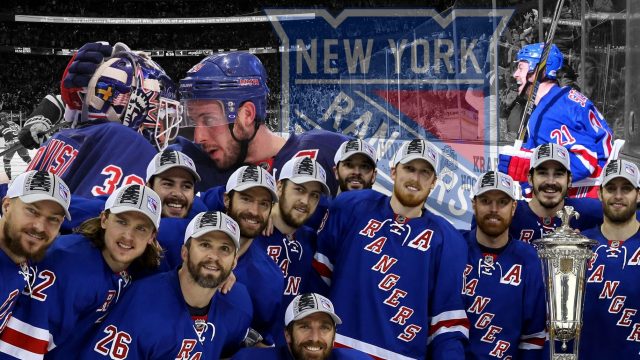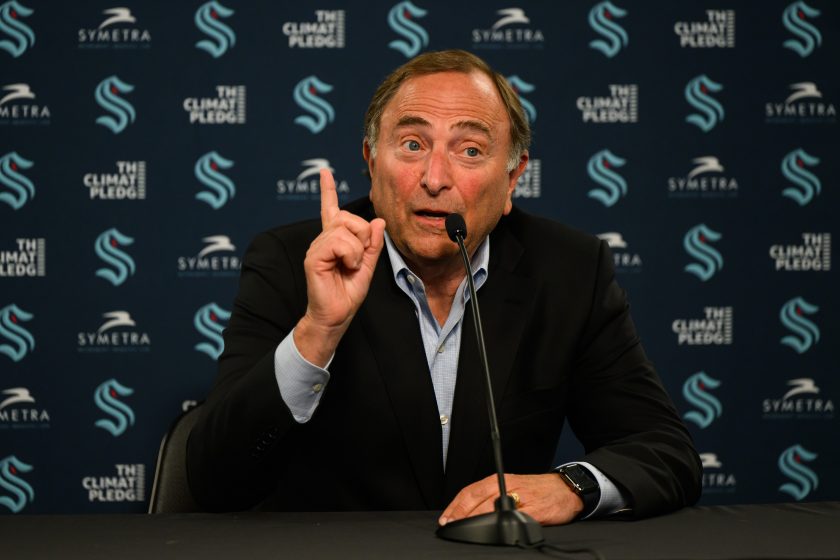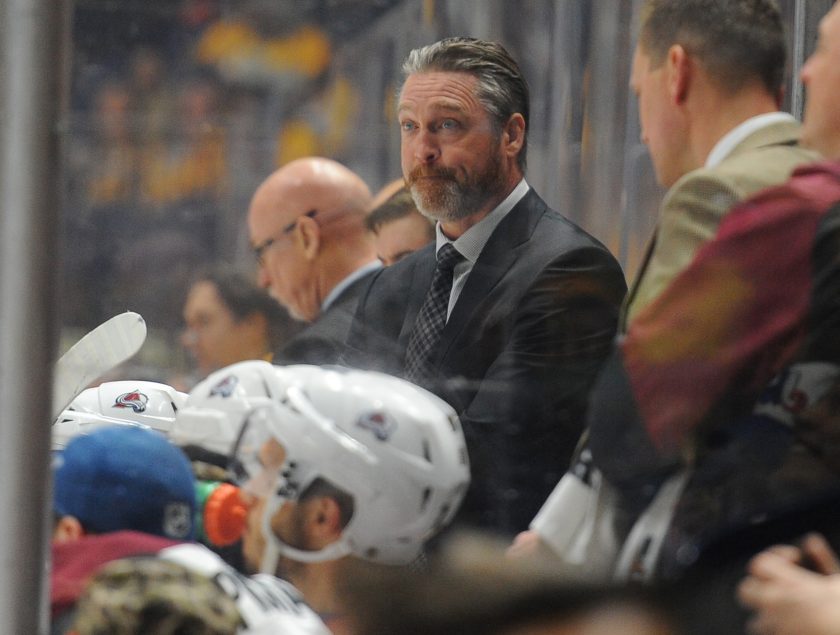New York Rangers appreciation time with potential teardown looming

Though devoid of championships, the New York Rangers are among the NHL’s most successful franchises since the implementation of the salary cap 13 years ago.
[dropcap]R[/dropcap]ick Nash and Michael Grabner seem sure to be traded. Mats Zuccarello might be. And, gulp, Ryan McDonagh? The New York Rangers are going to trade Mac? The captain?!
Such thoughts occupy the minds of Rangers fans these days—days filled with uncertainty and, perhaps, more than some disgust for the faithful.
Maybe, though, those fans ought to take a moment and focus on the most jarring element of the potential teardown that looms between now and the Feb. 26 trade deadline—uncertainty.
Because, fans, you aren’t too accustomed to this, are you? And that in itself should be greatly appreciated-perhaps for the first time.
[sc name=”Rangers Center”]There are still no Stanley Cups since the magical summer of 1994, a development that seems hardly surprising given the Blueshirts’ tortured modern history. What there has been, though, is a sustained run of excellence—yes, excellence—in the era of the NHL salary cap.
There’s no way around it—the club’s accomplishments in this time of forced parity have been matched by few others. Since the implementation of the cap following the 2004-05 lockout, there have been 12 seasons played before this one. The Rangers have qualified for the tournament 11 times. They’ve made the conference finals three times, the cup final once. It has been a remarkable stretch under an economic system that has provided very little financial leeway in the form of significant rises in the cap.
Not impressed? Well, there’s this for some perspective: Since the cap came into existence, the Penguins have played an NHL-high 157 playoff games, according to the Elias Sports Bureau. Second on that list is the Rangers, with 129. Detroit and Chicago, with a combined four Stanley Cups in the cap era, are tied with 128.
More: The Rangers’ presence in the playoffs in 11 of the 12 capped seasons is matched only by the Red Wings, Penguins and Sharks. And the Blueshirts are tied for second in that span with 22 playoff series played, matching the Sharks, Blackhawks and Red Wings, according to Elias.
Making that all the more impressive, this club has done it with one true franchise player—the goaltender. Henrik Lundqvist hasn’t had Sidney Crosby or Evgeni Malkin or Patrick Kane or Jonathan Toews to take care of business at the other end of the ice. The Rangers came within striking distance of the cup three times with ensemble casts.
[sc name=”Rangers Link Next” link=”https://elitesportsny.com/2018/01/27/who-should-go-if-new-york-rangers-sell-at-trade-deadline/” text=”Who Should Go if the Rangers Sell?” ]There’s a strong argument that the lack of a game-breaker has been the difference, of course. It doesn’t diminish the fact that this team has been competitive for the cup with one superstar on a roster of 20.
So why haven’t the Rangers worked the system to find some other superstars, you say? Tanked it and plummeted to the bottom of the league, where they would finally have had access to the elite talent that escapes them? Sinking to the depths, after all, is how the Blackhawks got Kane and Toews, the Penguins got Crosby and Malkin, and Edmonton ended up with Connor McDavid and Toronto with Auston Matthews in recent seasons.
Well, for starters, many of the fans who advocate for this strategy also tear their hair out when the Rangers lose two in a row and won’t accept a playoff-less season. Oh, and there’s the fact that tanking in the NHL is a crapshoot. Having the worst record hardly guarantees the top overall pick, given a lottery system designed to protect against losing one’s way into that spot. And that’s to say nothing of whether such a generational talent is even available in a certain draft.
Finding such players usually requires years in the wilderness. Simply put, a franchise often needs multiple seasons of irrelevance before getting a shot at such an opportunity. The Oilers drafted first overall from 2010-12 and ended up with Taylor Hall, Ryan Nugent-Hopkins, and Nail Yakupov. Only in 2015 did McDavid, the truly special player, arrive with the promise of revitalizing that moribund team.
The Blackhawks, now among the league’s model franchises, existed in that dark netherworld for a decade – missing the playoffs nine times in 10 seasons – before Toews (third overall, 2006), and Kane (first, 2007) finally arrived to lead them back to prominence.
The bottom line is, a dive to the bottom doesn’t come with a guaranteed surfacing date. And most teams that end up there don’t do it voluntarily. That’s why the Rangers’ efforts in the past 13 years need to be applauded.

Having left behind his freewheeling spending ways of the pre-cap era, former team president and general manager Glen Sather committed to the new reality by drafting well and pursuing a team-building philosophy that emphasized youth (and as a result, lower salaries). The Rangers weren’t the only club to see the light early on, but that doesn’t diminish that proactive decision that set them up for year after year of playoff appearances in a time in which it’s proven extremely difficult to accomplish that.
Slats also did what he could to put the Rangers over the top. Recognizing the elusive need for that elite offensive talent to make a difference in the playoffs after the lunchpail Black-and-Blueshirts failed to get past New Jersey in the 2012 Eastern Conference finals, Sather made the blockbuster trade for Rick Nash that offseason. At the following season’s trade deadline, seeking roster depth, he sent forward Marian Gaborik to Columbus for center Derek Brassard, winger Derek Dorsett, and defenseman John Moore.
Before the 2013-14 trade deadline, he boldly sent captain Ryan Callahan to Tampa Bay as part a deal for Martin St. Louis.
The trades with the Blue Jackets and Lightning worked out, with those players playing integral roles in the Rangers’ run to the cup finals in 2014. Nash, though a good player in his time on Broadway, was never the decisive postseason force Sather envisioned.
No titles in the cap era, but it doesn’t matter. Management acted aggressively in the best interests of the club in those seasons – including the dealing of four consecutive first-round draft picks from 2013-16 – and did the best it possibly could under the circumstances to bring the Stanley Cup back to New York.
An aside: Despite the 4-1 series result, the opinion here is that the 2014 team was perfectly capable of winning the cup final against Los Angeles; the Rangers just didn’t play well, blowing four two-goal leads in the first two games on the road, including two in the third period of Game 2. The faster and better-rested team at the time, New York failed to dictate the pace of play against a big but plodding Kings team that had played three seven-game series before the final, with the Rangers missing numerous great chances to win in double overtime in Games 2 and 5.
Fact is, the Rangers have given their fans a team that’s made its way into the playoffs in all but one season under a system designed to punish sustained success, doing it without the advantage of elite scorers held by some of the other teams that have perpetually succeeded under the cap.
Trading away the club’s best players in the next couple of weeks in order to replenish the organization might seem like sacrilege for a fan base that, if not spoiled by multiple championships runs in recent seasons, has grown accustomed to spring playoff games at Madison Square Garden.
If the reloading trades happen and the Blueshirts do fail to make the tournament for the first time since 2009-10 – when they were eliminated by Philadelphia in a shootout in their final game of the season – fans shouldn’t howl. They should take a step back to appreciate what’s been achieved and most importantly, trust that a management group that has mostly made the right moves since the lockout is doing so again in looking to the future – and trying to maintain a run of competitiveness and consistency that’s been largely overlooked.
[sc name=”Rangers Link Next” link=”https://elitesportsny.com/2018/02/01/what-do-the-new-york-rangers-need-to-do-to-make-the-playoffs/” text=”What Do the Rangers Need To Do To Make Playoffs?” ]





